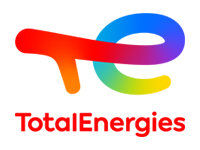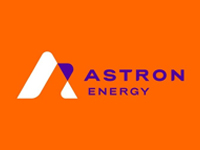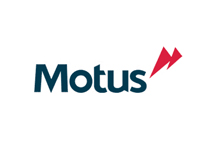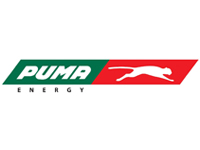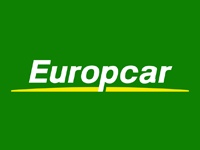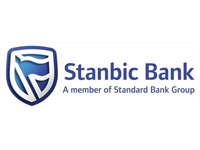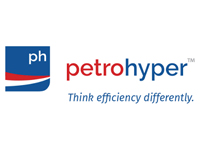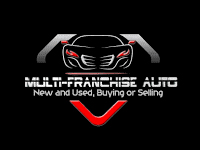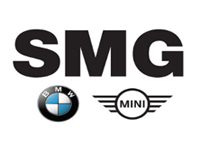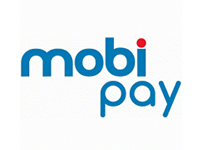FREQUENTLY ASKED QUESTIONS
Frequently Asked Questions
We can tell you everything about Payment24
GENERAL QUESTIONS
Most frequent questions and answers
Once you have contacted us and we have consulted with you to ascertain your needs, we can get you up and running inside two weeks.
We have a help line open 24hrs a day.
This is simply the ability to deliver personalized, relevant notifications based on customer interest, past buying behavior and location. It is an incredibly powerful tool for engaging with customers and creating exciting new monetization opportunities.
Our mobile application can be freely downloaded from the major app stores, which means there are no card-printing, issuing and management fees. With the widespread adoption of ‘contactless’ readers in banking terminals such as Spire, Ingenico and Verifone, it is now possible to use Payment24 tamper-proof contactless stickers.
Real-time is “as it happens” which means that simultaneous with any transaction Payment24 is monitoring it, authorising it and reporting back. We provide tools that give you information about your business in real-time, giving you actionable data that will allow you to make immediate decisions, making your business smarter and more efficient. You can manage the fuel consumption of all your clients, enable and disable accounts across your distribution channels in real-time.
Payment24 uses world-class terminal providers like Ingenico, Verifone and Spire to provide reliable real-time transactions over multiple communication formats such as GPRS, Edge, 3G, Wi-Fi or a combination of communication methods. Our Payment24 application can reside on Ingenico devices together with the merchant’s existing banking software.
The Payment24 platform is hosted on Microsoft’s Azure environment, an integrated operating system for cloud computing that facilitates the management of scalable applications over the Internet. Payment24’s hosting and management environment is wholly maintained by Microsoft at their own data centres.
The Payment24 Platform was developed using the latest version of Microsoft’s .NET Framework. The Management and MIS portal is delivered as a web application, running on a Microsoft IIS web server, developed in C# using Microsoft SQL Azure as database server.
Definitely not. While we agree that too much irrelevant data and notifications can become daunting for fleet managers and result in missing out on critical alerts, Payment24 keeps things simple by allowing you to cherry pick from a menu of very relevant checks and balances. These include improving vehicle utilisation, driver allocation, route management, accurate fuel monitoring, maintenance management, monitoring driver behaviour, speed and idling. However, if you don’t need it you don’t have to have it.
Yes we can. The Payment24 platform crosses boundaries, languages and currencies with ease.
The tamper-proof contactless sticker is stuck on the inside of the vehicle’s windscreen. The windscreen tags use Near Field Communication (NFC) technology and do not require other expensive equipment. Nor is it labour-intensive (expensive) to install. Fleet owners can keep their vehicles in service without taking them off the road, which saves time and money.
All windshield tags are procured through Paradigm Group directly. The tags do not require any maintenance and the re-issuing of broken tags can be done by the client directly. Note, tags can only be broken when a driver tries to remove them. Inactive tags are issued to fleet managers who can activate and link the tags to specific vehicles via the Fleet Management Portal.
TECHNICAL QUESTIONS
Most frequent questions and answers
| RFID | Barcode | |
| Line of Sight | Not required | Required |
| Read Range | Passive RFID: – Up to 40 feet (fixed readers) – Up to 20 feet (handheld readers) | Several inches up to several feet |
| Read Rate | Up to 1000s simultaneously | Only one at a time |
| Identification | Uniquely identify each item/asset tagged | Typically only identifies the type of item (UPC Code) but not uniquely |
| Read/Write | RFID tags are Read/Write | Read only |
| Technology | RF (Radio Frequency) | Optical (Laser) |
| Interference | Limited only by RFID frequencies. | Obstructed barcodes cannot be read (dirt covering barcode, torn barcode, etc.) |
| Automation | “Fixed” readers don’t require human involvement to collect data (automated) | Most barcode scanners require a human to operate (labor intensive) |
- Pump Tagging
- Bank Fleet Card
- Vehicle Verification
- Fuel in Tank Verification
| Fleet Fuel Management Comparison Chart | ||||
| Option 1 | Option 2 | Option 3 | Option 4 | |
| Pump Tags | Card Verification | Vehicle Verification | Fuel in Tank | |
| Terminal Required | No | Yes | Yes | No |
| Nozzle Installation | No | No | No | Yes |
| Pump Installation | Yes | No | No | No |
| Vehicle Installation | No | No | No | Yes |
| Vehicle Tag | Yes | Yes | Yes | No |
| Driver Tag | No | No | Yes | No |
| Driver PIN Security | No | No | Yes | No |
| Verify Vehicle on Fill | No | No | Yes | Yes |
| Verify Fuel in Tank | No | No | No | Yes |
| Driver Verification | No | No | Yes | No |
| Easy to clone | Yes | Yes | No | No |
| Offline Fleet Checks | Yes | Yes | Yes | Yes |
| Online Fleet Checks | No | Yes | Yes | Yes |
| Self Service | Yes | Yes | Yes | Yes |
| RFID | NFC | |
| Stands for | Radio Frequency Identification (RFID) | Near-Field Communication (NFC) |
| Specification | A method of uniquely identifying items using radioactive waves. | Medium of communication that allows devices to talk to each other through touch. |
| Operating Frequencies | RFID operates at a range of radio frequencies. | Fast data transmit than HF |
| Explosion | NFC operates at 13.56 MHz | NFC is still an emerging technology. |
| Scan Distance | Up to 1 m | Up to 10cm |
| Standards | ISO 14443, 15693, 18000 | ISO 14443 |
| Read/Write | RFID tags are Read/Write | May act as both a reader and a tag. |
| Technology | RF (Radio Frequency) | A newer, more finely honed version of RFID. |
| Scan Tags Simultaneously | Yes | No |
| Read Range | Passive RFID: – Up to 40 feet (fixed readers) – Up to 20 feet (handheld readers) | Short range, less than 4 inches |
| Communication | one-way | Two-way |
| Automation | “Fixed” readers don’t require human involvement to collect data (automated | Require a human to operate |
| RFID HF | RIFD UHF | |
| Stands for | High Frequency Radio Frequency Identification (RFID) HF | Ultra High Frequency Radio Frequency Identification (RFID) UHF |
| Operating Frequencies | HF operates at a range of 13.56 MHz | UHF operates at 865-928 MHz |
| Data Transmit | High data transmit | Fast data transmit than HF |
| Range (min to max) | Near contact(min) 1 meter (max) | I inch(min) 10 meters(max) |
| Standards | ISO 14443, ISO 15693 | ISO 18000-6C |
| Technology Usage | Widely used for access control & contactless payment applications | Essential for supply-chain applications; Most commonly ,case & Pallet tracking ,returnable container Identification |
| Communication | magnetic field coupling is used | RF propagation method is used |
| Security | More encryption possibility | Low encryption possibility |
| 1D Barcodes | 2D Barcodes | |
| Stands for | One dimensional (ID) Barcode | Two-dimensional(2D) Barcode |
| Specification | A functionality of displaying info in a readable electronical format linearly | A functionality of displaying info in a readable electronical format two dimensionally |
| Capacity | Holding ability up to 85 characters | Holding ability up to 100 characters |
| Nature | Object are provided with label & index | Objects are provided with descriptions |
| Ability | Creates a wide barcode | Creates a smaller barcode |
| Information processed | Numbers ,English | Numbers ,English ,Chinese ,pictures ,voice & other binary information |
| Error correcting functionality | It does provide this functionality | It does not provide this functionality |
| Information Density | It has low density | It has a high density |
| Database dependent | Yes | No |
| Efficiency | It provides limited efficiency | It provides greater efficiency |
| BLE | NFC | |
| Stands for | Bluetooth Low Energy (BLE) | Near Field Communication (NFC) |
| Specification | Medium of communication through listening signals. | Medium of communication that allows devices to talk to each other through touch. |
| Ability | BLE continually transmits a signal to be received by BLE –enabled smart phones | NFC tags can only communicate when the NFC enabled Smartphone is near |
| Supported OS | IOS7 ,Android 4.3 & greater | Android 4.0 & greater ,Windows Phone 8 & Blackberry X. |
| Energy Efficient | It requires battery replacement after two years | It creates its own battery ,therefore not needed any replacement |
| Ease of Use | Bluetooth requires manual setup | NFC connects automatically |
| Technology | Extension of Bluetooth technology | A newer, more finely honed version of RFID. |
| Service | Bluetooth takes longer time to connect | NFC provides a quick service |
| Superior in Functionality | BLE cannot be used to identify who would be next in a line or even which line, or position in line, a person may occupy. | NFC is a superior alternative to BLE. |
| Communication | one-to-many | One-to-one |
| BLE | Classic Bluetooth | |
| Stands for | Bluetooth Low Energy (BLE) Technology | Classic Bluetooth Technology |
| Key Difference | BLE enables new applications | Classic Bluetooth does not provide this feature. |
| Data Transfer | BLE data transfer rates are below 100 kb/s | Classic Bluetooth data transfer rate can be up to 200 MB/s |
| Explosion | BLE is an emerging Technology | Classic Bluetooth is currently in widespread use all Over the world |
| Density | It has strong density | It has strong density too. |
| Range | Up to 250 m | Up to 100m |
| Superior in Functionality | It does not provide such facility | It provides Serial Port Profile(SPP) For emulation of serial data connections |
| Large scale network | Weak in BLE | Strong in Classic |
| Power Consumption | Very strong | Strong |
| Cost | High | Affordable |
| Connectivity | Connectivity is more faster | Connectivity is less than BLE |
| Chip | Magnetic stripe cards | |
| Specification | The chip uses a piece of exact information Of a user | Magnetic strips contains the exact information of a user |
| Reducing medical fraud | Chip helps reduce medical fraud | It does not support |
| Storage Capacity | Greater storage capacity | Less storage capacity |
| Functionality | It provides maximum functionality | It gives minimal functionality |
| Offline access | It enables offline access to health care information | It does not allow |
| Authentication | It only allow authorized users to access the information | It does not have this feature |
| Strong Audit | It support for digital signatures to enable strong audit | It does not support |
| Biometric storage | It allows on-card bio-metric storage | It does not allow |
| application Data support | It supports for multiple sets of application Data on the card | It does not allow |
| Security | Chips have greater security | Magnetic strips have minimal security |

